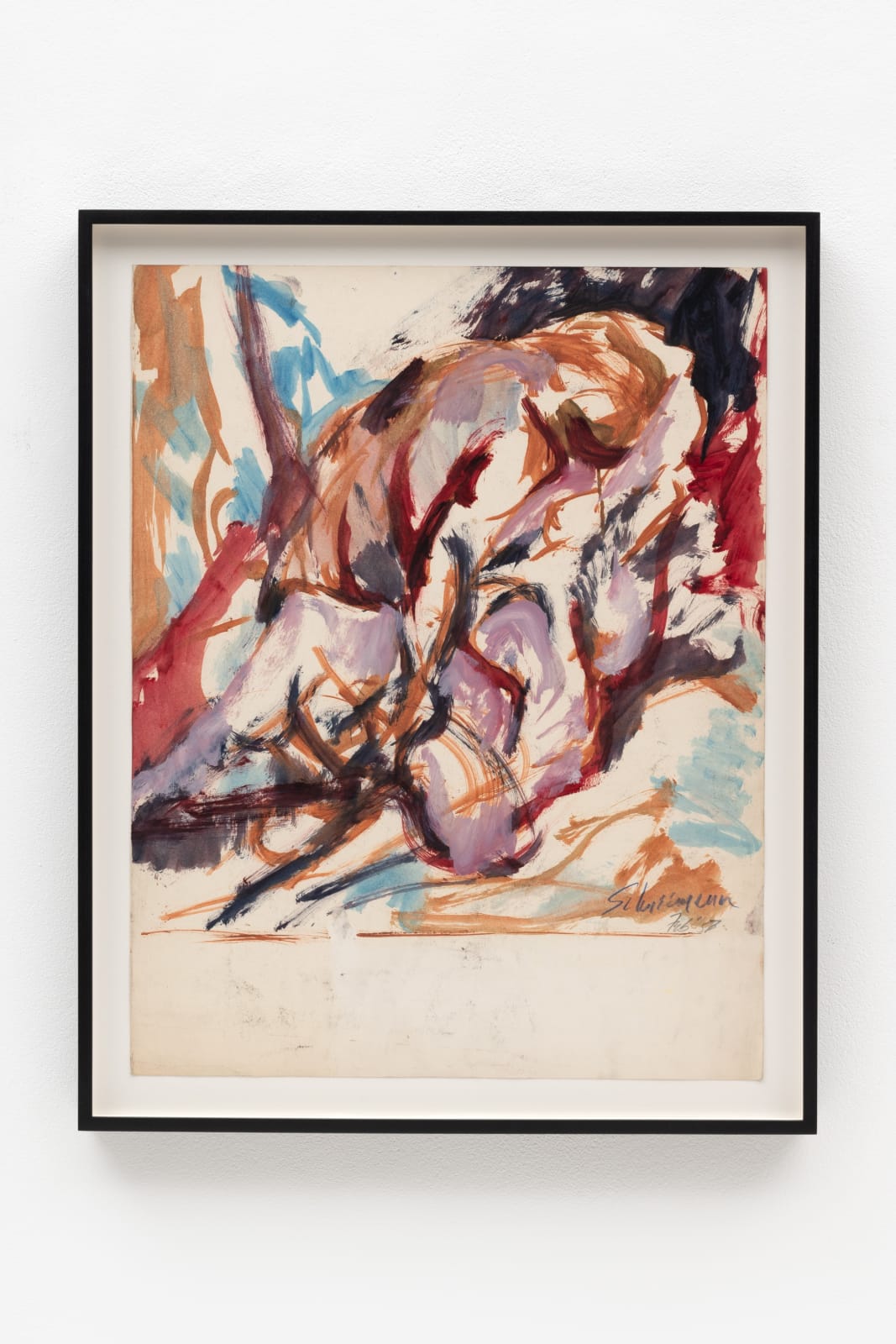
Carolee Schneemann
Untitled, 1957
Watercolour on paper
57 x 44.5 cm
22 1/2 x 17 1/2 in
Framed: 64.3 x 51.5 x 3.9 cm
25 1/4 x 20 1/4 x 1 1/2 in
22 1/2 x 17 1/2 in
Framed: 64.3 x 51.5 x 3.9 cm
25 1/4 x 20 1/4 x 1 1/2 in
Schneemann examined themes of sexuality, identity and gender through painting, performance, installation and photography. In much of her work, Schneemann explored her own identity as a woman in a patriarchal...
Schneemann examined themes of sexuality, identity and gender through painting, performance, installation and photography. In much of her work, Schneemann explored her own identity as a woman in a patriarchal society. All of Schneemann’s work is rooted in her formal training, and throughout her career she insisted on being thought of as a painter. By connecting the kinetic nature of her paintings and assemblages to her radical performances and films, Schneemann’s work has made a permanent mark on the history of art.
These nude watercolours were made at a critical period of intellectual and artistic growth, the works demonstrate the importance of the act of drawing—of drawing as action—that would remain constant. Here in the early stages of her life, she is finding ‘action,’ palette, and the body as subjective experience, which would all come to be synonymous with the artist.
These nude watercolours were made at a critical period of intellectual and artistic growth, the works demonstrate the importance of the act of drawing—of drawing as action—that would remain constant. Here in the early stages of her life, she is finding ‘action,’ palette, and the body as subjective experience, which would all come to be synonymous with the artist.